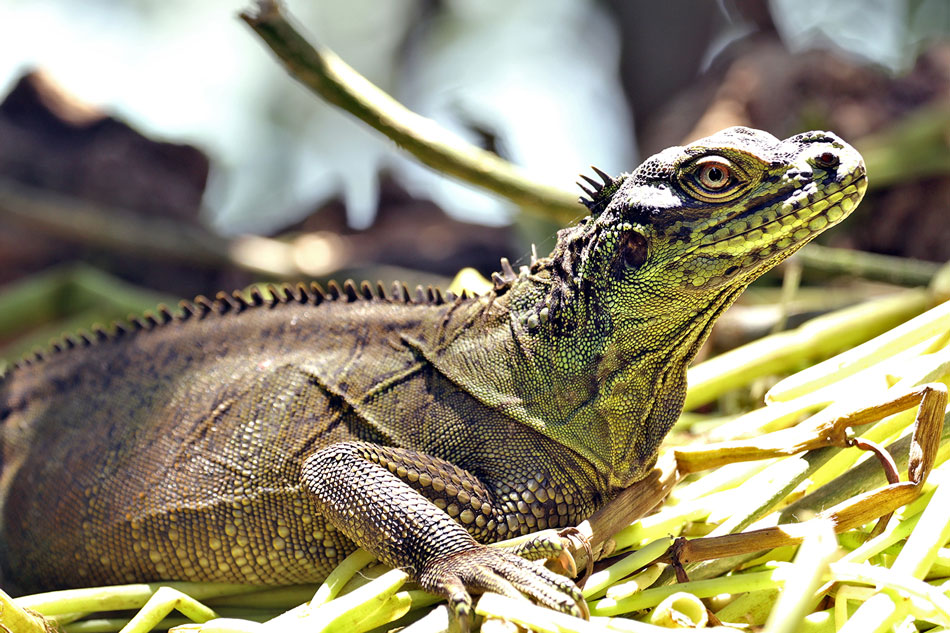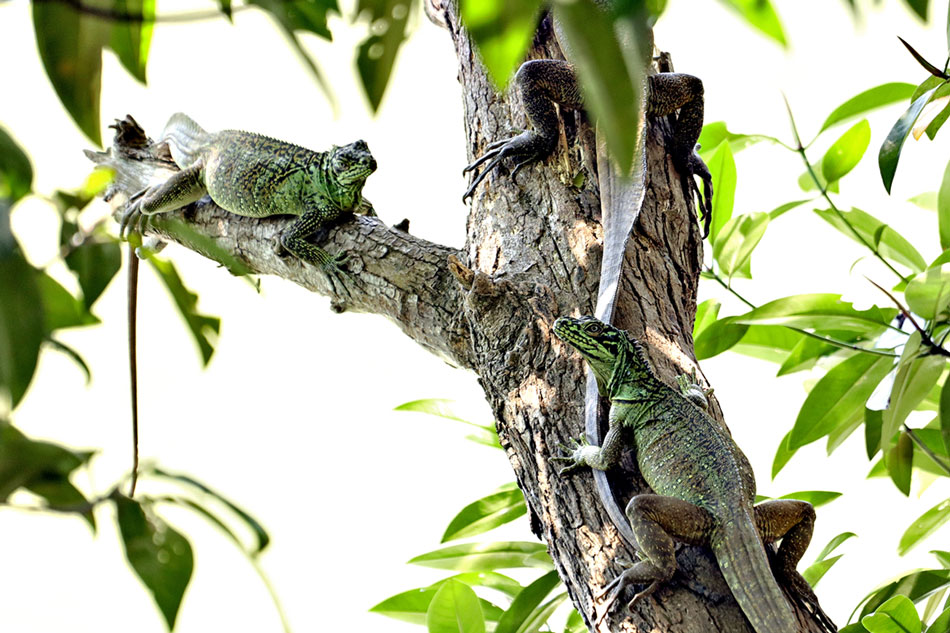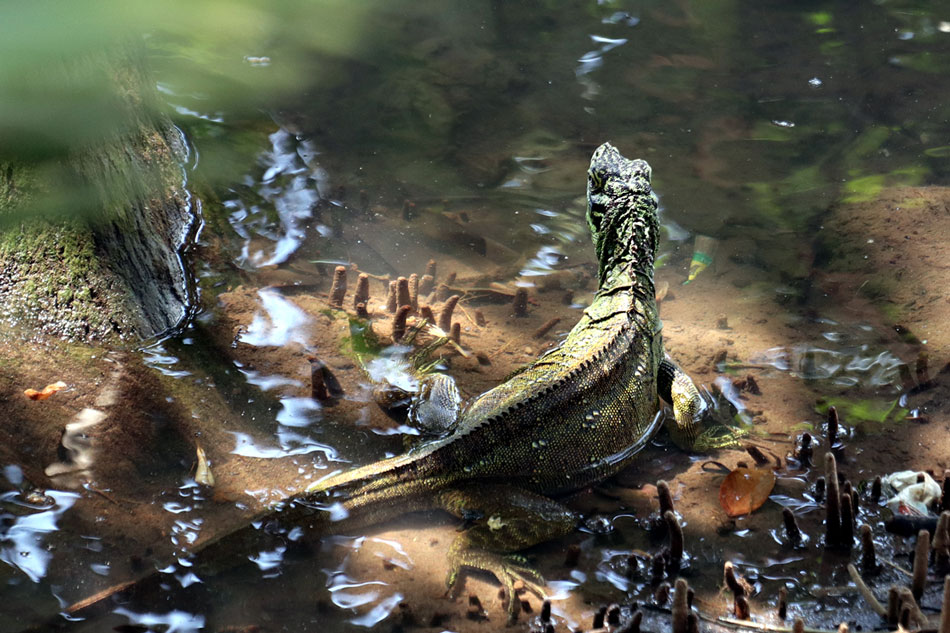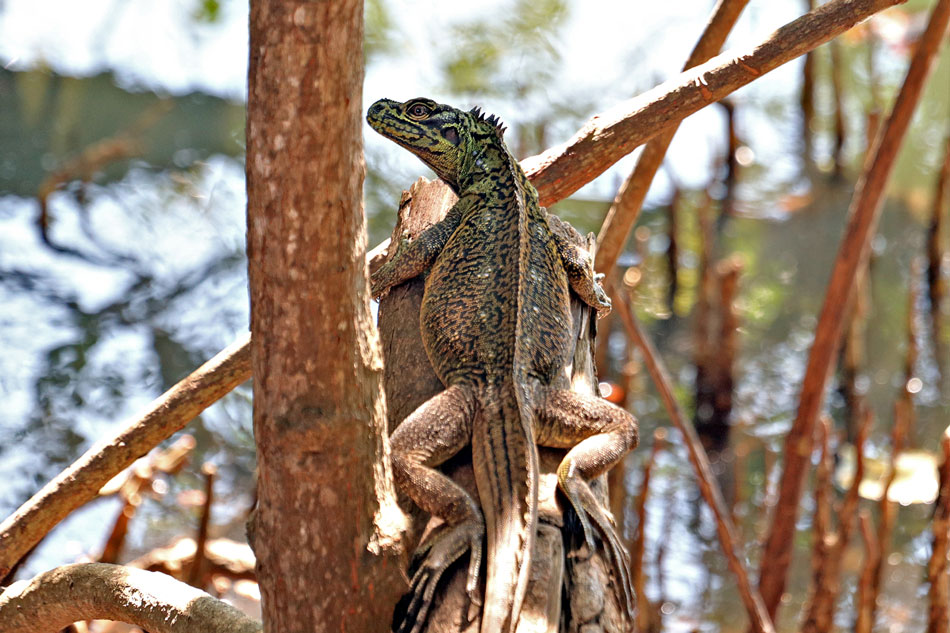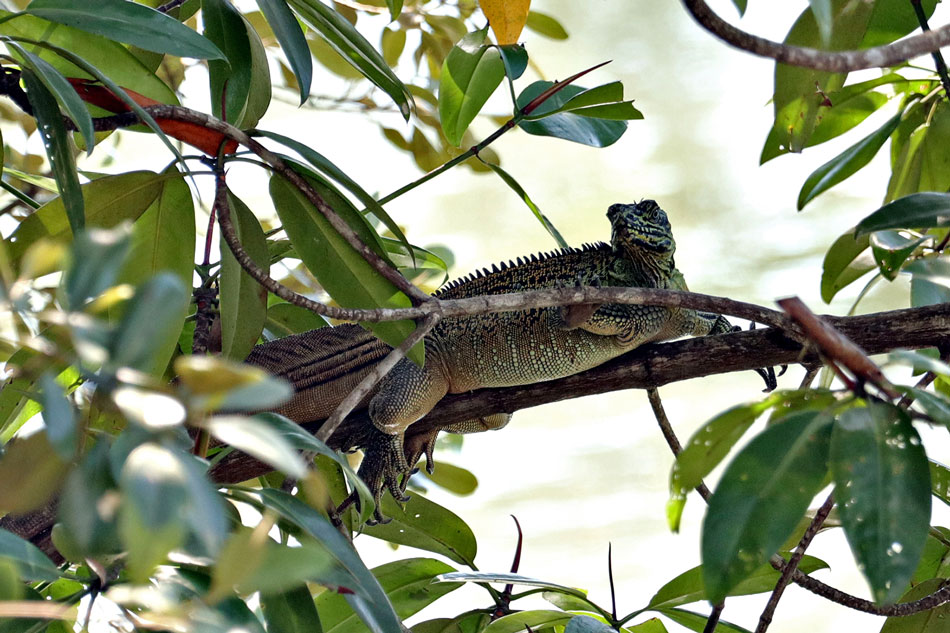PH sailfin lizards in Misamis Oriental: An unusual case of a community lizard | ABS-CBN
ADVERTISEMENT

Welcome, Kapamilya! We use cookies to improve your browsing experience. Continuing to use this site means you agree to our use of cookies. Tell me more!
PH sailfin lizards in Misamis Oriental: An unusual case of a community lizard
PH sailfin lizards in Misamis Oriental: An unusual case of a community lizard
Erwin M. Mascariñas
Published Jun 02, 2018 03:23 PM PHT
|
Updated Jun 04, 2018 01:12 PM PHT
JASAAN, Misamis Oriental -- A village in the town of Jasaan, Misamis Oriental, where around 100 lizards co-exist with a community, has become a unique case that prompted authorities to push for a river area here to be declared a critical habitat for the Philippine Sailfin Lizard.
JASAAN, Misamis Oriental -- A village in the town of Jasaan, Misamis Oriental, where around 100 lizards co-exist with a community, has become a unique case that prompted authorities to push for a river area here to be declared a critical habitat for the Philippine Sailfin Lizard.
The situation in Barangay Lower Solana, Jasaan is considered by scientists as unique because the lizards have become friendly neighbors of a family that has been feeding the lizards outside their house along a dike on Solana river's edge for more than a decade.
The situation in Barangay Lower Solana, Jasaan is considered by scientists as unique because the lizards have become friendly neighbors of a family that has been feeding the lizards outside their house along a dike on Solana river's edge for more than a decade.
Rodulfo Dael, 77, and his 65-year-old wife Alma, has been protecting lizards in Barangay Lower Solana for 16 years now.
Rodulfo Dael, 77, and his 65-year-old wife Alma, has been protecting lizards in Barangay Lower Solana for 16 years now.
“Back then, we saw these lizards out on the river’s edge and sometimes along the grass and vegetated area but they had been very elusive. But in 2002, while we were eating at our porch, three small lizards appeared, we threw a banana at them then they started eating. After that, they kept on coming back to our porch facing the river. Eventually, we came to love the lizards and it has since been our advocacy to protect them,” said Rodulfo.
“Back then, we saw these lizards out on the river’s edge and sometimes along the grass and vegetated area but they had been very elusive. But in 2002, while we were eating at our porch, three small lizards appeared, we threw a banana at them then they started eating. After that, they kept on coming back to our porch facing the river. Eventually, we came to love the lizards and it has since been our advocacy to protect them,” said Rodulfo.
ADVERTISEMENT
The Daels have also had to protect the lizards from hunters.
The Daels have also had to protect the lizards from hunters.
“Back then, many who would come and hunt them down, they would kill them using rifles or handgun or even homemade weapons and sometimes they would come and wait underneath the tree where they would rest and use nets to catch them in vast numbers. I would go out and try to fight the hunters off or shout at them when they are on the other side of the river,” he said.
“Back then, many who would come and hunt them down, they would kill them using rifles or handgun or even homemade weapons and sometimes they would come and wait underneath the tree where they would rest and use nets to catch them in vast numbers. I would go out and try to fight the hunters off or shout at them when they are on the other side of the river,” he said.
In 2016, national scientist Dr. Angel Alcala, who published the 1986 Guide to Philippine Flora and Fauna, one of the sources on lizard research, said the situation in Jasaan is unique.
In 2016, national scientist Dr. Angel Alcala, who published the 1986 Guide to Philippine Flora and Fauna, one of the sources on lizard research, said the situation in Jasaan is unique.
“This is a very unusual phenomenon for these sailfin lizards. Never have I heard or seen in my long travels and research that such a strange occurrence of these species that have built a community and strongly bound with a family in this village in Jasaan. We need to address and raise concerns towards the protection and preservation of these lizards,” said Alcala, one of the leading authorities on community ecology, biogeography, and amphibians and reptiles.
“This is a very unusual phenomenon for these sailfin lizards. Never have I heard or seen in my long travels and research that such a strange occurrence of these species that have built a community and strongly bound with a family in this village in Jasaan. We need to address and raise concerns towards the protection and preservation of these lizards,” said Alcala, one of the leading authorities on community ecology, biogeography, and amphibians and reptiles.
The International Union for Conservation of Nature (IUCN), the world's most comprehensive inventory of the global conservation status of biological species, lists the Philippine Sailfin Lizard under the threatened species of the vulnerable category or high risk in the wild.
The International Union for Conservation of Nature (IUCN), the world's most comprehensive inventory of the global conservation status of biological species, lists the Philippine Sailfin Lizard under the threatened species of the vulnerable category or high risk in the wild.
According to the IUCN Red List of Threatened Species, it is “Listed as Vulnerable because it is suspected that a population decline, estimated to be more than 30% would be met over a ten-year period which is ongoing from the recent past to the near future, inferred from habitat loss and the very heavy collection of this species for the pet and food trade.”
According to the IUCN Red List of Threatened Species, it is “Listed as Vulnerable because it is suspected that a population decline, estimated to be more than 30% would be met over a ten-year period which is ongoing from the recent past to the near future, inferred from habitat loss and the very heavy collection of this species for the pet and food trade.”
The Philippine sailfin lizard is an excellent swimmer and has flattened toes that enable it to run across water. It is omnivorous, feeding on fruit, leaves, flowers, insects, and small animals. It lives near rivers in the tropical forests of the Philippines. Males have a larger crest on their back than the females. The males also show a violet color as they grow older. Females are less colorful.
The Philippine sailfin lizard is an excellent swimmer and has flattened toes that enable it to run across water. It is omnivorous, feeding on fruit, leaves, flowers, insects, and small animals. It lives near rivers in the tropical forests of the Philippines. Males have a larger crest on their back than the females. The males also show a violet color as they grow older. Females are less colorful.
Philippine sailfin lizards live mainly beside waters such as rivers, riverbanks, rice fields, etc., as these lizards love to swim. The adults may reach up to a meter in length.
Philippine sailfin lizards live mainly beside waters such as rivers, riverbanks, rice fields, etc., as these lizards love to swim. The adults may reach up to a meter in length.
CRITICAL HABITAT
The provincial government of Misamis Oriental has sought the help of the Dael family in protecting the lizards.
The provincial government of Misamis Oriental has sought the help of the Dael family in protecting the lizards.
The Protected Area Management and Biodiversity Conservation Section (PAMBCS) of the Department of Environment and Natural Resources (DENR) Region 10 together with the Province of Misamis Oriental is pushing for a river area here to be declared as a critical habitat for the Philippine Sailfin Lizard.
The Protected Area Management and Biodiversity Conservation Section (PAMBCS) of the Department of Environment and Natural Resources (DENR) Region 10 together with the Province of Misamis Oriental is pushing for a river area here to be declared as a critical habitat for the Philippine Sailfin Lizard.
“We are now finalizing the steps to have this area along the lower Solana River in the town of Misamis Oriental declared as a critical habitat for the Hydrosaurus pustulatus or the Philippine Sailfin Lizard commonly known as ibid. So far, the provincial government of Misamis Oriental, as well as the local government of Jasaan, has been very supportive to have this declaration in place to help safeguard and protect this unique area where the sailfin lizards thrive,” said Ranoray Love A. Noro, section chief of PAMBCS-DENR 10 .
“We are now finalizing the steps to have this area along the lower Solana River in the town of Misamis Oriental declared as a critical habitat for the Hydrosaurus pustulatus or the Philippine Sailfin Lizard commonly known as ibid. So far, the provincial government of Misamis Oriental, as well as the local government of Jasaan, has been very supportive to have this declaration in place to help safeguard and protect this unique area where the sailfin lizards thrive,” said Ranoray Love A. Noro, section chief of PAMBCS-DENR 10 .
Noro said the process was initially pushed by the provincial government in coordination with PAMBCS-DENR 10 .
Noro said the process was initially pushed by the provincial government in coordination with PAMBCS-DENR 10 .
“After the province coordinated with our office, we immediately moved to collect the necessary data and then the process needed to have the declaration. Soon, we will be able to submit the requirements to our central office in Manila with the endorsement and support from the barangay level, municipal and the province,” said Noro.
“After the province coordinated with our office, we immediately moved to collect the necessary data and then the process needed to have the declaration. Soon, we will be able to submit the requirements to our central office in Manila with the endorsement and support from the barangay level, municipal and the province,” said Noro.
Donato H. Bojo, Zoology Technician of the PAMBCS-DENR10, said that they are confident in getting the declaration a few months from now.
Donato H. Bojo, Zoology Technician of the PAMBCS-DENR10, said that they are confident in getting the declaration a few months from now.
“We have already finished our survey, we are now in the final stages in completing the mapping of the area. We will then submit all the data back to Manila, and then have the declaration signed. Hopefully, we would be able to get about 3 hectares along the Solana River, 20-meter area along the other side of the river as part of the protected area under the declared critical habitat since houses have not yet occupied the area. On the other side where you already have the concrete dike and the houses, hopefully, the residents will be able to help us with the implementation,” said Bojo.
“We have already finished our survey, we are now in the final stages in completing the mapping of the area. We will then submit all the data back to Manila, and then have the declaration signed. Hopefully, we would be able to get about 3 hectares along the Solana River, 20-meter area along the other side of the river as part of the protected area under the declared critical habitat since houses have not yet occupied the area. On the other side where you already have the concrete dike and the houses, hopefully, the residents will be able to help us with the implementation,” said Bojo.
Lawyer Jeffrey Saclot, provincial tourism officer of Misamis Oriental, said "the province is working with the DENR to hopefully have the area declared as a critical habitat enabling further legislation for the protection and conservation of the species. It will also pave a way for the site for a sustainable eco-tourism destination as we are planning to build a view deck along the river area for visitors to get a glimpse of the lizards."
Lawyer Jeffrey Saclot, provincial tourism officer of Misamis Oriental, said "the province is working with the DENR to hopefully have the area declared as a critical habitat enabling further legislation for the protection and conservation of the species. It will also pave a way for the site for a sustainable eco-tourism destination as we are planning to build a view deck along the river area for visitors to get a glimpse of the lizards."
Read More:
Philippine sailfin lizards
Misamis Oriental
reptiles
environment
wildlife
DENR
IUCN
threatened species
ADVERTISEMENT
ADVERTISEMENT




